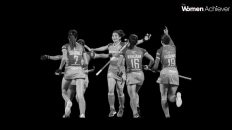Sports involvement by women is more observable in well-developed countries
Women have been fighting for equality all throughout history. In sport, specifically, exposure to women’s sports were once not even permitted in the Olympic Games. After finally being permitted to participate in sports, women had to undergo gender testing to make sure they were not men trying to cheat the system.
Furthermore, the coverage of women’s sports did not supersede coverage of dogs and horses until 1992. To this day, female athletes still experience significantly less and different media coverage than their male counterparts. The purpose of this study is to examine how increasing exposure to women’s sports impacts attitudes towards women’s sports.
Improvements in Gender Equality in Sports:
Although women have faced many challenges throughout history, they have come closer and closer to achieving gender equality and those advances cannot be ignored. They have made it possible for women and girls to become more involved, and thus, more competitive in sports.
The London 2012 Olympic Games featured, for the first time in history, an equal number of sports for women as for men. Upon this expansion of women’s sports, many countries such as the US experienced a large growth in the number of female Olympians – so large that female US Olympians outnumbered male US Olympians and went on to earn more medals, including more gold medals, for the US. The 2012 Games provided opportunities for more than just the US, though. Every single country participating, for the first time ever, had at least one female participant.
Sports fans, too, are seemingly becoming more interested in the push for gender equality by watching more women’s sports. More and more people watch the Women’s Final Four of the National Collegiate Athletic Association (NCAA) basketball every year, consistently breaking viewership records.
It is important to keep women and girls participating in sports and exercise because sports have many benefits for men and women regardless of gender including decreased social loafing later in life with a history of participating in team, rather than individual sports
Gender Inequality in Sports Still Exists:
Despite the improvements towards reaching gender equality in sports, female athletes still face numerous obstacles. The media, for example, present sports as if there are masculine (e.g., football and ice hockey) and feminine (e.g., gymnastics and figure skating) sports, aligning with traditional expectations of male and female athletes, which makes it more difficult to break traditional gender barriers and allowing women to participate in masculine sports and men to participate in feminine sports.
In fact, many female athletes are only accepted by society and receive coverage in the media if they participate in traditionally feminine sports. If a woman dares to participate in a masculine sport, their sexuality is immediately questioned. The media tends to ignore, which devalues, women’s athletic accomplishments by focusing on their physical appearance, private lives and femininity and sexuality even if they achieve more impressive athletic feats.
Not only does the media focus on different features of a female athlete opposed to a male athlete, but some researchers analysed media coverage of female athletes and reported that women receive poorer quality of technical production, less overall coverage, and are demeaned as “girls” while men are portrayed as “strong and powerful men”.
Media Exposure of Women’s Sports:
Gender inequality, as noted, has many negative consequences for female athletes. In addition to the unequal type of coverage that female athletes receive, they also receive less overall coverage. Exposure to women’s sports are also perceived as less exciting and slower than men’s sports. In that same study, participants reported that they had minimal experience with women’s sports and only watched women’s sports if that is what was on television.
The media, though, does not give women’s sports much coverage, minimizing the frequency of which sports fans view women’s sports. In fact, less than 10% of sports media covers exposure to women’s sports and less than 2% of sports media covers women’s sports that are deemed masculine. Unfortunately, news staff are less likely to recognize this difference than viewers, meaning that news staff may not realize that they are arguably discriminating against female athletes.
Even though the Olympic Games are now offering the same number of sports for women as they do men as previously noted, the Olympic Games also displays unequal coverage through their networks. For example, the US women’s basketball team won their fifth consecutive gold medal in 2012, but received less than half of a minute in prime-time coverage whereas the men’s team who won their second consecutive gold medal received approximately half of an hour of prime-time coverage






Add comment